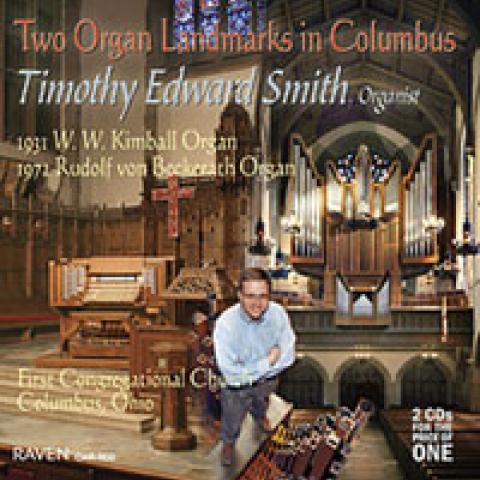The Great Organ, Methuen Memorial Music Hall, Iain Quinn. Walcker/Aeolian-Skinner/Andover, 115 ranks; Raven OAR 360, $14.98,
www.ravencd.com.
Bach, Prelude and Fugue in G, BWV 541; Liszt, Gebet, S. 265, Ora pro nobis, S. 262, Resignazione, S. 263; Franck, Choral No. 3 in A Minor; Askell Masson, Meditation; Wilfred Josephs, Sonata; Leslie Howard, Moto di Gioia.
Fasten your seatbelts, as the saying goes, for Bach’s Prelude and Fugue in G Major, which is played at a furious clip—the Prelude in under three minutes! This is followed by sympathetic performances of three of Liszt’s lesser known pieces: Gebet, Ora pro nobis, and Resignazione, quiet compositions that show off the rich softer sounds of this legendary instrument. An exuberant playing of Franck’s Choral in A Minor follows, showing the color and variety available on this noble organ.
The three final compositions on the CD are of great interest in that each is dedicated to Mr. Quinn, although whether they remain in manuscript is not indicated. The first is a Meditation (1992) by the Icelandic composer Askell Masson, based on the third movement of his marimba concerto. It has a quiet improvisatory character that is compelling, with a slight buildup towards the end. Wilfred Josephs’ Sonata (1992) follows—a work of considerable musical interest. Its four-minute “Andante” would make a lovely voluntary, as would the brief “Vivo” if your technique is up to the challenge. The Moto di Gioia (1993) by Leslie Howard brings this splendid CD to an close. The six-minute work sounds very difficult—double pedaling and all that—but Quinn is up to every musical challenge.
—Charles Huddleston Heaton
Pittsburgh, Pennsylvania
chas.heaton@verizon.net
New Recordings: Methuen Memorial Music Hall, Iain Quinn
The Diapason



